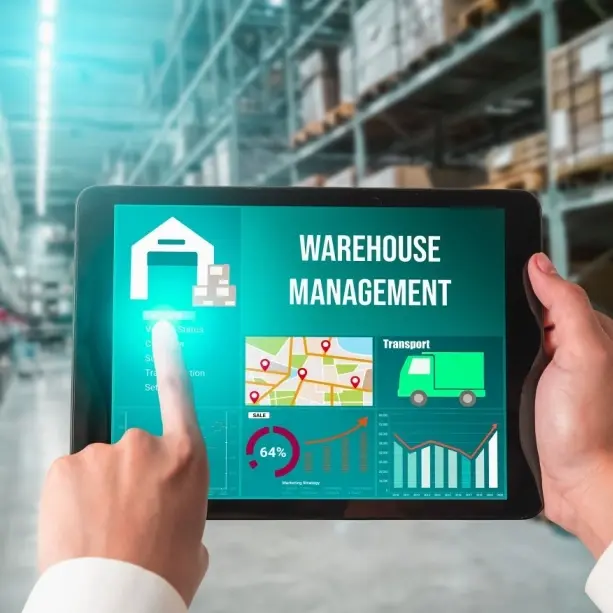In today’s intricate and fast-paced global market, the strategic use of location data has become indispensable for efficient supply chain operations. By harnessing the power of geospatial information, businesses can gain unprecedented insights into their logistics processes, leading to enhanced operational efficiency and customer satisfaction. This article explores five critical ways in which location data can revolutionize logistics and supply chain management and provides insights into how you can get more out of your location data.
Increase Your ROI by Investing in AirFinder Everywhere
- Loss Prevention. Reduce the amount of loss that occurs during the supply chain process
- Location Coverage. AirFinder Everywhere uses a combination of GPS, Cellular, and WiFi to determine location everywhere
- Security Alerts. Know when a delay in shipment has occurred so the problem
can be addressed immediately.
5 Ways to Use Location Data for Supply Chain Management
While there are countless ways that location data can be strategically applied to improve your supply chain operations, the technology naturally lends itself to certain functionalities. Five of the best ways to use location data for supply chain management and insights on how to fix supply chain issues include:
1) Gain Oversight of Daily Processes
In the intricate web of supply chain operations, having comprehensive oversight of daily processes is paramount. Location data offers unparalleled visibility into every segment of the supply chain, from raw material sourcing to final product delivery. By integrating these innovative technologies, companies can track the movement of goods in real time, ensuring that every step is monitored and managed efficiently. This continuous oversight not only helps in identifying bottlenecks but also in optimizing workflow, thereby reducing delays and enhancing overall productivity. Moreover, this granular visibility into daily operations allows for more accurate reporting and analysis, fostering a data-driven decision-making environment that is essential for staying competitive in today’s highly competitive market.
2) Produce Data to Enhance Predictive Capabilities
Harnessing location data to produce actionable insights significantly enhances a company’s predictive capabilities. By analyzing historical and real-time location data, businesses can identify patterns and trends that inform future operations. For instance, predictive analytics can forecast demand fluctuations, allowing companies to adjust their inventory levels proactively. This foresight mitigates the risk of stockouts or overstocking, ensuring that resources are allocated efficiently. Furthermore, predictive maintenance becomes a reality as data on the movement and usage of equipment can signal when maintenance is due, preventing unexpected breakdowns. Ultimately, the ability to predict future scenarios with greater accuracy enables businesses to strategize effectively, optimize their supply chains, and maintain a competitive edge.
3) Reduce Search Times and Replacements
One of the most tangible benefits of using location data in supply chain operations is the dramatic reduction in search times and the need for replacements. With precise location tracking, the whereabouts of every asset can be pinpointed instantly, eliminating the time-consuming and often costly process of searching for misplaced items. This is particularly valuable in large warehouses or distribution centers where the scale and complexity can make manual searches impractical. This functionality can also be extended to when portable assets are on the road, allowing for quick alerts if these critical assets end up in the wrong place. By ensuring that assets are always accounted for, companies can avoid unnecessary replacements, thereby reducing costs. This efficiency not only saves time and money but also minimizes operational disruptions, allowing the supply chain to function more smoothly and reliably.
4) Provide Assurance for Customers and Stakeholders
In an era where transparency and reliability are highly valued, customers and stakeholders expect ongoing assurance that operations are functioning as promised. Location data plays a crucial role in building the trust this requires. Real-time tracking and detailed location data provide customers with up-to-date information about their orders, enhancing their confidence in the company’s reliability. For stakeholders, this transparency translates into a clearer understanding of the supply chain’s efficiency and performance. Regular updates and precise tracking data ensure that stakeholders are kept informed, fostering a sense of trust and accountability. This level of assurance not only strengthens customer relationships but also enhances the company’s reputation and credibility in the market.
5) Strengthen Risk Management and Mitigation
The unpredictable nature of supply chain operations necessitates robust risk management strategies. Luckily, location data is a powerful tool in identifying and mitigating potential risks. By monitoring the movement of goods and identifying patterns, companies can predict and respond to disruptions more effectively. For instance, if a shipment is delayed due to unforeseen circumstances, real-time location data allows for immediate rerouting and contingency planning. Furthermore, location data can help identify high-risk areas or routes, enabling companies to avoid potential hazards. This proactive approach to risk management ensures that the supply chain remains resilient and capable of handling disruptions, safeguarding the company’s operations and reputation.
Best Practices for Getting More Out of Your Location Data
The benefits of location data are inherent to the supply chain tracking technology that produces that data, but if you deliberately select and manage your solution, you’ll see far more value and return on investment. Some best practices for getting the most out of your location data include:
Train Your Employees
To maximize the benefits of location data, it’s imperative to ensure that your employees are well-versed in its applications and potential. Comprehensive training programs should be developed to educate staff on how to interpret and utilize location data effectively. This includes understanding the basics of the central operative technologies, learning how to use relevant software tools, and grasping the importance of accurate data entry. Proper training empowers employees to leverage location data to optimize operations, improve decision-making, and enhance overall productivity. Regular refresher courses and updates on add system features and capabilities should also be part of the training regimen to keep the workforce adept at handling evolving data tools and techniques.
Employ Geofencing and Custody
Geofencing technology can significantly enhance the utility of location data by enabling the creation of virtual boundaries around specific geographic areas. When integrated into your supply chain management system, geofencing can trigger alerts and actions whenever a tracked asset enters or leaves a designated zone. This functionality is crucial for maintaining the custody of high-value items, ensuring they remain within authorized areas, and providing real-time notifications of any unauthorized movements. Geofencing also aids in streamlining logistics by automating processes such as check-ins and check-outs, thereby reducing manual intervention and errors. Overall, implementing geofencing effectively safeguards assets, enhances security, and improves operational efficiency.
Maintain Historical Location Records
Keeping historical location records is essential for analyzing trends, identifying patterns, and improving future operations. These records provide a wealth of information that can be used for retrospective analyses, helping businesses understand what worked well and what didn’t. For instance, historical data can reveal seasonal trends in delivery times, allowing companies to anticipate and prepare for peak periods. Additionally, maintaining a robust database of past locations can aid in compliance with regulatory requirements and provide a valuable resource in the event of disputes or audits. Historical location records are a critical component of a data-driven strategy, offering long-term insights and fostering continuous improvement.
Invest in a Solution That Works Both Indoors and Outdoors
While outdoors is typically more important in the realm of logistics, a truly comprehensive location tracking solution should be effective in both indoor and outdoor environments to extend its value. This dual capability ensures seamless tracking of assets regardless of their location, from warehouses and yards to transit routes. Indoor or onsite tracking often relies on technologies such as Bluetooth, RFID, and WiFi, while outdoor tracking typically uses GPS. By employing a solution that integrates these technologies, businesses can achieve uninterrupted visibility and control over their assets. This integration enhances operational efficiency by providing consistent and accurate location data, whether assets are being stored, moved within facilities, or transported between locations. A versatile tracking solution is vital for maintaining comprehensive oversight and optimizing supply chain operations.
Work With a Team That Offers Custom Benefits
Collaborating with a team that understands your unique needs and offers tailored solutions can significantly enhance the value derived from your location data. Customization ensures that the tracking system aligns with specific operational requirements and business objectives. Whether it’s developing or integrating with specialized supply chain management software, providing dedicated support, or offering bespoke analytics, a customized approach can address the unique challenges and opportunities within your supply chain. Partnering with a team that offers these custom benefits ensures that the solution is not only implemented effectively but also evolves with your business, adapting to new demands and maximizing your return on investment.
Go Beyond Location Data
While location data is invaluable, its true potential is realized when combined with other types of data. Integrating location data with information on inventory levels, asset conditions, maintenance history, and more can provide a more comprehensive view of your operations. This holistic approach allows for more informed decision-making and strategic planning. For example, combining location data with condition data can help ensure compliance with government regulations and industry standards, especially within the cold chain. Similarly, integrating your supply chain tracking solution with your existing telematics system can paint a more detailed picture of what’s on your trailers at any given time. By going beyond location data, companies can gain deeper insights and drive greater value from their data investments.
Consider Using AI in the Future
Artificial Intelligence (AI) holds immense potential for enhancing the utility of location data. AI can analyze vast amounts of data quickly, identifying patterns and providing predictive insights that are beyond human capability. By incorporating AI into location data analysis, businesses can forecast demand, optimize routes, and even predict maintenance needs. AI-driven analytics can transform raw location data into actionable intelligence, enabling proactive decision-making and strategic planning. While AI technology isn’t quite there yet, it’s improving rapidly and will soon be to a point of providing extended value. As it continues to advance, its integration into location data systems will become increasingly essential for businesses seeking to stay competitive and innovative, considering that AI programs cannot generate data on their own and need a basis for their predictions. Considering AI’s future role ensures that companies understand the importance of gathering location data now so they are prepared to leverage AI later.
Embrace the Power of Location Data for Supply Chain Management
The integration of location data into supply chain operations offers a multitude of benefits that enhance efficiency, transparency, and resilience. To this end, we provide our AirFinder Everywhere solution, an affordable, customizable solution that’s designed to provide the visibility you need and grow alongside your company for years to come. From gaining oversight of daily processes to strengthening risk management and mitigation, the location data provided by AirFinder is a game-changer in supply chain management. By leveraging these capabilities, businesses can optimize their operations, reduce costs, and provide greater assurance to customers and stakeholders, ensuring long-term success in an increasingly competitive market. To learn how our solution can work for you, book a demo with our team of experts today.
Publisher: Source link











